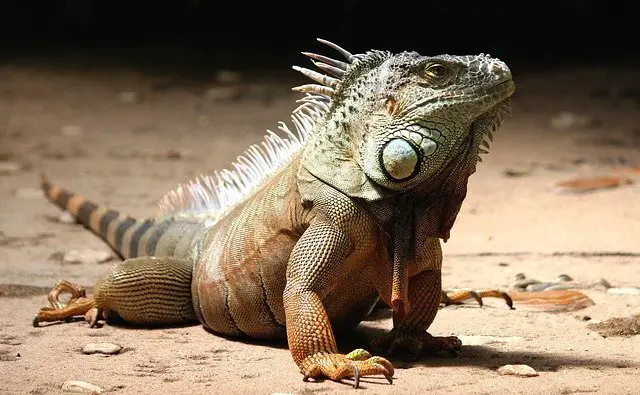Not everyone has a large amount of space in their living environment to dedicate to their love of reptiles, and that’s okay! Many reptiles don’t mind having smaller enclosures, the most common being smaller species of lizards, snakes, and turtles.
Although the setup will vary depending on the type of reptile you’re looking to home, it’s helpful to know that there are many options for keeping reptiles in smaller enclosures.
Reptiles That Don’t Need A Lot Of Space
Lizards
From geckos to chameleons and anoles, there are many unique options for owning a lizard. One of the best things about this type of reptile is that many species stay small throughout their lifespan.
When choosing which lizard is best for you, you’ll want to consider the requirements of each species and the amount of space you have to accommodate their needs. Most smaller lizards can live their entire lives in 10-20 gallon cages, but the exact dimensions will vary depending on what type of lizard you choose. For example, leopard geckos prefer longer cages, while day geckos prefer taller cages. Aside from that, both essentially live in the same amount of space.
If you’re new to owning reptiles, choosing a lizard that requires a manageable amount of care is best. Some of the best small beginner lizards to own include leopard geckos, fat-tailed geckos, green anoles, and many more. Bearded dragons are also great for beginners, but you may need to consider upgrading to a more significant enclosure in the future.
If you’re looking for something a little more exotic and complex, chameleons, crested geckos, and spiny-tailed lizards may be more of your style. Whatever your needs, you can find a small lizard species suitable for your living space.
Snakes
Some find them intimidating, others find them intriguing, but one of the best things about snakes is that they generally all require a similar amount of care. You may wonder which snakes are best kept in a smaller environment with so many species and colors to choose from are best kept in a smaller setting.
While some snakes can grow to extensive lengths, many species stay petite and prefer living in enclosures with minimal space. Snakes that measure around 3 ft or less in length are usually more than happy to live their entire lives in a 15-20 gallon cage.
Some great beginner snakes that fit that description are Mexican milk snakes, Kenyan sand boas, western hognose snakes, and more. These snakes require inexpensive enclosures with minimal decor and are an excellent choice for those with little space.
A few other snakes grow more prominent in length but are still okay with being in a similar-sized cage due to their small girth or living habits. African ball pythons, corn snakes, and king snakes are some of the few commonly found in your local pet shop or reptile breeder.
When it comes to snakes, you have many options to choose from, even if you don’t have a lot of space.
Turtles
It may not be the first on the list, but just like lizards and snakes, turtles are an excellent option for anyone looking for a reptile that doesn’t need much space. While most turtles tend to reach larger sizes, a handful of smaller species can thrive in smaller enclosures.
Red-eared sliders, painted turtles, and eastern box turtles are the most common small breeds, ranging between 4-12 inches in size. These reptiles are easy to care for and typically live in 10-20 gallon cages.
The habitat for turtles can vary depending on the species, as some prefer land, water, or a combination of both. These creatures are a perfect alternative for those who aren’t very fond of the typical reptiles look. Turtles are also known for their longevity and make great long-term companions.
When keeping any reptile in a limited space, the main rule is picking a smaller snake that won’t eventually outgrow its environment. While these reptiles are the most common options for smaller companions, many others can still fit your specific needs and requirements. The best way to know which snake will be best for you is by doing as much research as possible.




